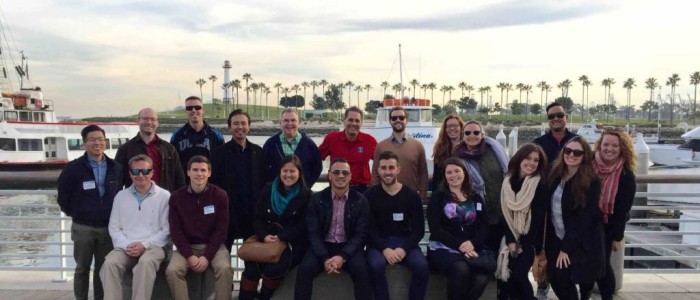Team SQA Tours the Port of Long Beach
On January 22, the SQA team was invited to tour the Port of Long Beach, one of the nation’s largest shipping and receiving facilities. We had a great time joining ISM-LA on this educational behind-the-scenes trip through the port. Here are some interesting facts we uncovered while cruising through the terminals:
- The Port of Long Beach operates separately from the Port of Los Angeles. While they may appear to be one and the same from a bird’s eye view, the POLB and POLA are two distinct ports operating adjacent to each other. The Port of Long Beach is the second busiest port in the United States, and the Port of Los Angeles is first. Together, they’re the ninth busiest seaport complex on the planet.
- 6.8 million 20-foot containers move through the Port of Long Beach each year. This accounts for about a third of the containers that move through California ports, and about 1 in every 5 containers shipped throughout the United States! The shipments that move through the port account for over 47 billion USD in business sales annually. 90% of port traffic is from East Asia.
- Another nickname for the Port of Long Beach is “The Green Port.” That’s right—the port is environmentally friendly. The Green Port Policy has been in effect since 2005, enacted to reduce negative environmental impacts from the port’s day-to-day operations in areas including air quality, water quality, and sustainability. The policy’s main principles include employing the best available technology to reduce environmental impact, educating the community, and leading environmental stewardship and compliance.There is also a Green Ship Incentive Program in place. Currently, vessels participating in this program strive to meet the International Maritime Organization’s Tier 2 and 3 standards, which reduce a ship’s NOx emissions from 15-80%.
- The Port of Long Beach utilizes the best seaport technology in the United States. In 2014, new ship-to-shore gantry cranes were installed at Middle Harbor, inside the Port. The cranes are the first Automated Guided Vehicles in the country. Unmanned and exceptionally fast, these machines can handle payloads of up to 70 tons at once, and the crane arms can expand 226 feet across container ships.
- A satellite launch processing facility is housed at the Port of Long Beach. Sea Launch operates both its 17-acre Home Port complex and Marine Segment out of Long Beach. Satellites are received at POLB, then transported through the Payload Processing Facility and transferred to the Assembly and Command Ship. Then, the satellite is loaded onto the program’s launch platform, Odyssey, to be transported to the equator in an environmentally controlled, stable environment.


Comments are closed.